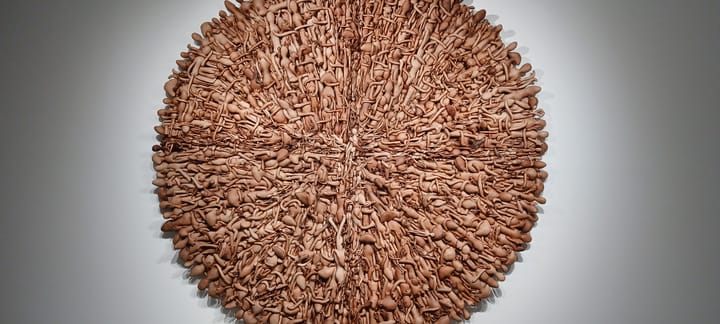another post about Levrero, “jumping up and down like an excited dog,” that’s me not him
Strange to think at the time I was born Levrero was writing feverishly in Piriápolis. He was 26, says the TRANSLATOR’S AFTERWORD. Annie McDermott, the translator, adds that he later looked back on that time with wonder, as his ‘imaginative’ period.
Imagination, she writes, is for Levrero very different from invention, which is simply just making things up. MARIO LEVRERO, REALIST, the second translator’s note, says that he always had to set interviewer’s who assumed he was a fantasist, perhaps some sort of magical realist, straight by saying I am a realist. Kit Schluter then goes on to explain what that means.
It means—at this point I realise I haven’t said translators of what; The Thinking-About-Gladys Machine published by & in 2024—something I suspect like reading knots, reading that script written in knots called quipu, used by the Inca, where the knots are images, words, messages and events, really experienced, but just as likely to come from dreams as waking life, which recur, with their own energy, without, that is, the prompting of consciousness. Levrero’s realism, in according them reality, adheres to the principle of both their reality and their singularity. (I just looked up the word cadacualtic in relation to their self-motion.)
‘I’ve remembered one detail,’ I said [writes Leverero in “Jelly”], aside, to Horacio. ‘She talked a lot about Pergolesi.’
He clapped a hand to his forehead and began to grin so delightedly it seemed cruel. I was afraid he might say ‘Eureka’.
‘Pull yourself together,’ I told him, because he was stammering. He said he was absolutely certain she must be one of the trauma victims at the City, that establishment where educated people meet up and get drunk in secret. A famous café, but under the counter, apparently, they even serve methylated spirits.
‘Do you think so?’ I asked, sticking out my lower lip (to show disappointment).
‘Definitely,’ he said.
Second translator Schluter explains that it was not only the germ, the genesis of his imaginative work, with roots in the irrational and unconscious, that he regarded as belonging to realism. Levrero asks, Is a man who wakes up at seven a.m., puts on a suit and tie, and goes to work for someone else not fantastical (however usual)? Is it not fantastical, in fact, that this situation is not widely seen as unusual? Schluter puts it that Levrero breaks the illusion of naturalness through which the ‘real world’ asserts its unquestioned authority in a radical way.
There is, Schluter writes, something profoundly liberatory about this re-evaluation, which inverts societal norms and suggests that our most peculiar intuitions may be, in fact, the seat of our reality. To spend a lifetime digging a hole through a wall for the sake of a vision, until the key one is using to dig with is worn to a stub, until one’s hands are blistered and scarred, may not be a life wasted. You are not throwing away your life but finding in the increasing detail with which your dream is realised something your life had lacked, hope. This is a realism of hope.
Levrero himself said of his method, in an ‘imaginary interview,’
I notice that something is bothering me: an image, a series of words, or simply a mood, an atmosphere, an environment. The clearest example would be an image or mood from a dream, after waking up in the morning; sometimes you spend a long time almost tangled up in that dream-fragment [. . .] When this goes on for several days, I take it as a sign that there’s something there I need to deal with, and the way to deal with it is to recreate it.


